
Women continue to confront a persistent gender pay gap, putting the goal of pay equity in jeopardy. This disparity is evident across various occupations, even in those predominantly occupied by women, where they earn less than their male counterparts for the same roles. The gender pay gap, a multifaceted issue, is not just a matter of fairness, but also has substantial negative economic implications. It reflects deep-rooted systemic biases and social norms that undervalue women’s work, and overburden them with caregiving responsibilities. Understanding the persistence and complexity of this wage gap is crucial for driving meaningful change and achieving pay parity in the foreseeable future.
Women make up nearly half of the workforce in the United States. They are the sole or co-breadwinner in 45% of opposite sex marriages, which is a dramatic increase from approximately 15% in 1972.
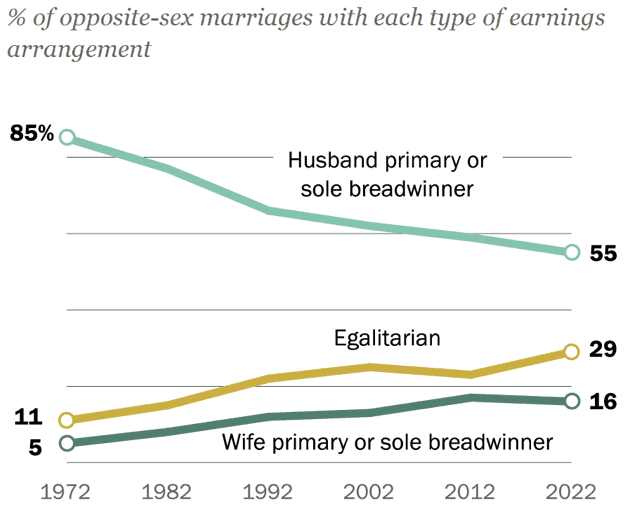
Yet, the gender pay gap persists, with women continuing to earn measurably less than men. As of 2022, female workers over age 16 earned only 82 cents for every dollar earned by men.
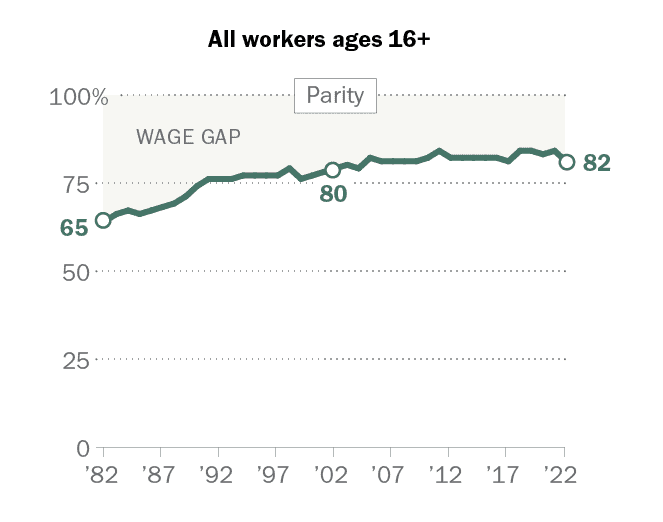
Furthermore, though the pay gap has stayed relatively stagnant over the past few years. While the pay gap saw a significant positive change from 1982 to 2002, moving from 65% to 80%, it has only seen another 2% change from 2002 to 2022. This is despite a widening gap in Bachelor’s degree attainment between men and women. If this pattern continues, it may take even longer to reach pay parity.
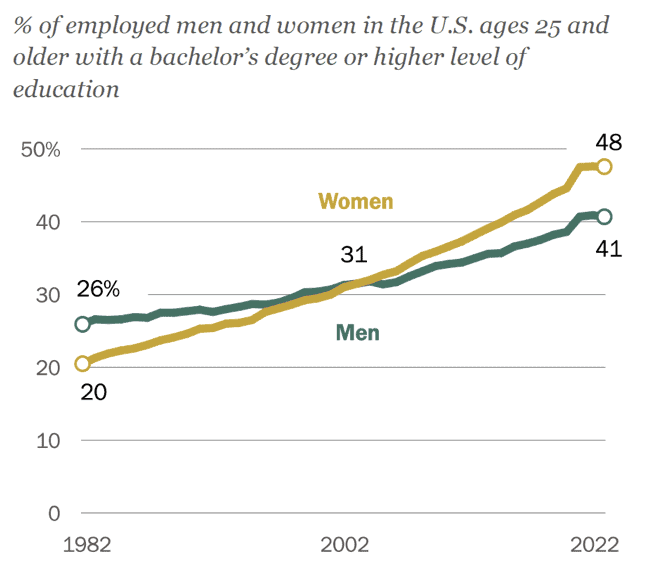
This gender pay gap persists, to varying degrees, in nearly every occupation where there is sufficient data to calculate an earnings ratio. Even in fields that are dominated by women, men are still paid higher wages. For example, in the education, training, and library occupational category, where 73% of the workers are women, they are paid 80 cents for every dollar men make. One of the more significant contributors to the wage gap is occupational segregation, or the imbalanced concentration of men and women in specific jobs. Women are concentrated higher than men in low-paid positions in the service industry, which contributes to approximately half of the gender wage gap. If occupational segregation persists, the wage gap is almost certain to persist alongside it.
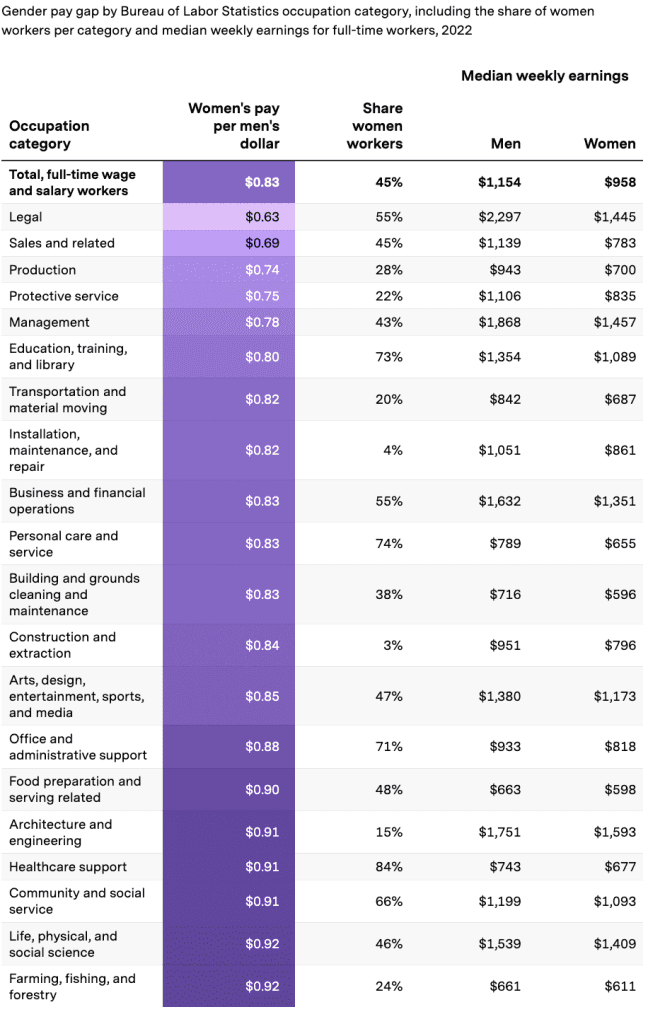
Another driving factor of the persisting gender pay gap is the disproportionate burden women bear from family care, including in pregnancy, childrearing, or other family reasons. Women are 5 to 8 times more likely than men to have their employment negatively impacted by caregiving responsibilities
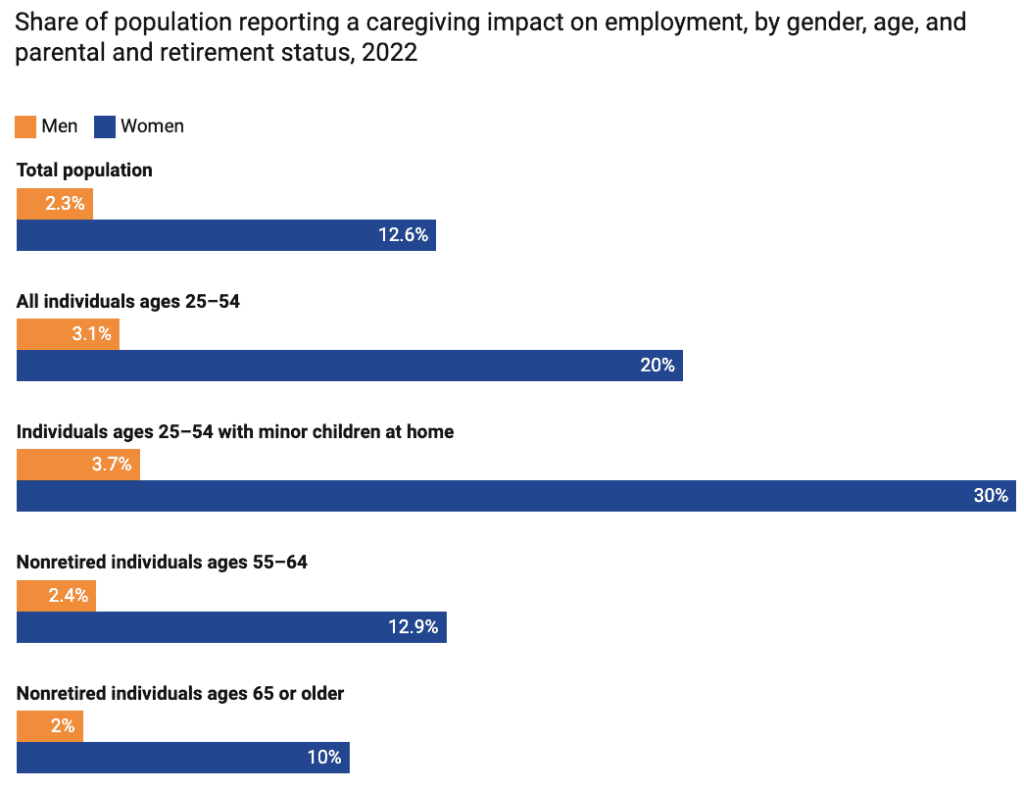
Where women often are expected to reduce their working hours or quit their jobs entirely after giving birth, men tend to be less effected, even receiving bonus pay in several cases soon after having children. Furthermore, in egalitarian opposite sex marriages, women still spend more time on caregiving and house work than men, while enjoying less leisure time.

The persistence of pay inequality has massive impacts on the economy. According to the National Partnership for Women and Families, women in the United States lose a combined total of approximately $1.6 trillion every year due to the wage gap. Thus, families, businesses, communities, and the overall economy suffer due to the gender pay gap.
In conclusion, the gender pay gap is a complex issue deeply embedded in our economic and societal structures. Despite significant progress in women’s education and participation in the workforce, the persistence of the wage gap highlights the need for a multifaceted approach to further address this issue. Factors like occupational segregation, disproportionate caregiving expectations, and blatant undervaluation significantly impact both individual women and the national economy. Closing this gap requires efforts from policymakers, businesses, and society as a whole to create equitable policies and work environments that value women equally. As we continue to struggle with this issue, it is important to stay informed and committed to fostering change, shortening the time it will take for gender pay parity to finally become a reality.

In today’s digital age, online reviews have become an indispensable tool for both consumers and businesses. With over 95% of shoppers relying on online reviews to make informed purchasing decisions, businesses can no longer overlook the power of these digital testimonials. How reviews influence sales is the only question. A recent study by Northwestern University’s …

Setting SMART goals is a valuable way to achieve progress and structure your professional development. If you’re not making progress towards your goals, looking for a way to be more productive, feeling lost or unsure of what constitutes success, or working with a team on a complex project, formatting your objectives in SMART goal format …

In today’s corporate landscape, the importance of women in corporate boards cannot be overstated. It’s not just about meeting a quota or ticking a box; it’s about driving better corporate governance and, ultimately, making more informed business decisions. Countless studies have shown that companies with more women in corporate boards are financially stronger, more innovative, …